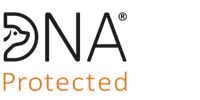The Stolen and Missing Pets Alliance (Sampa) have been lobbying to make pet theft a specific offence with tougher sentences since their launch in 2014. The Pet Theft Reform campaign was formed by Dr Daniel Allen in collaboration with Sampa in 2018. Since then, they have petitioned the government annually to change the law, triggering parliamentary debates, generating national media coverage and gaining support from animal welfare charities, the public and cross-party politicians.
With lobbying like this and the covid related rise in dog thefts in the UK, the government set up a Pet Theft Taskforce in May 2021 with the aim of gathering evidence to understand the factors contributing to a perceived or real rise in pet thefts and to recommend measures to tackle the problem. The Taskforce made up of officials from Defra, the Home Office and the Ministry of Justice as well as operational partners including the police, CPS, Border Force and Local Government, considered evidence from academics, animal welfare organisations, campaign groups, enforcement agencies and industry experts.
The Pet theft taskforce report was issued in September 2021 and made the following main recommendations.
- The creation of a new ‘pet abduction’ offence: Pet theft is currently treated as a loss of property to the owner, but we know that does not reflect the true severity of this crime. The new offence will prioritise the welfare of our pets as sentient beings and recognise the emotional distress to the animal in addition to its owner.
- Identifying and tracking cases: Reliable data on pet theft is limited and improved recording and data collection about these crimes will build a stronger evidence base about the problem.
- Improving the recording of ownership and transfer data: New requirements to register additional details and a single point of access to microchipping databases will support tracking lost and stolen dogs.
- Tackling the fear of crime: Police will work together with partner agencies to raise awareness about police initiatives and prevention measures.
Environment Secretary George Eustice said:
Pets are much loved members of the family in households up and down the country, and reports of a rise in pet theft have been worrying. Pet owners shouldn’t have to live in fear, and I am pleased this report acknowledges the unique distress caused by this crime.
Its recommendations will reassure pet owners, help the police to tackle pet theft, and deliver justice for victims. We will consider its findings carefully and work with colleagues across Government to start implementing its recommendations.
Supporting pilots of complementary methods identifying pets
Evidence was heard by the taskforce that some owners are concerned that microchipping is not sufficient for tracking stolen pets and there was some discussion of instances where microchips have been cut out of stolen pets.
Some police forces have decided to trial alternative identification methods due to difficulties identifying owners using microchips and photographs. Solutions are currently being piloted offering owners a complementary service to microchipping, in the form of voluntary DNA and forensic marking of pets. Police forces are running Dog DNA pilots whereby dog owner pays for a DNA kit, to swab their dog and store the dog’s DNA on a database. Police can then take DNA from recovered stolen dogs, to try to identify the owner.”
Cellmark is working closely with police forces around the country to offer DNA Protected to dog owners so they can register their dog’s DNA profile on Cellmark’s Forensic Dog DNA Database, an approach recommended in the Pet Theft Taskforce Report. Not only could this help in reuniting you and your dog in the event that he or she is stolen, DNA Protected could also help prevent dog theft. By purchasing accessories such as Cellmark’s high visibility anti-dog theft lead, collar and window stickers, the DNA Protected service acts as a dog theft prevention device, by showing dog thieves that you have taken steps to protect your four-legged friend from being stolen.

